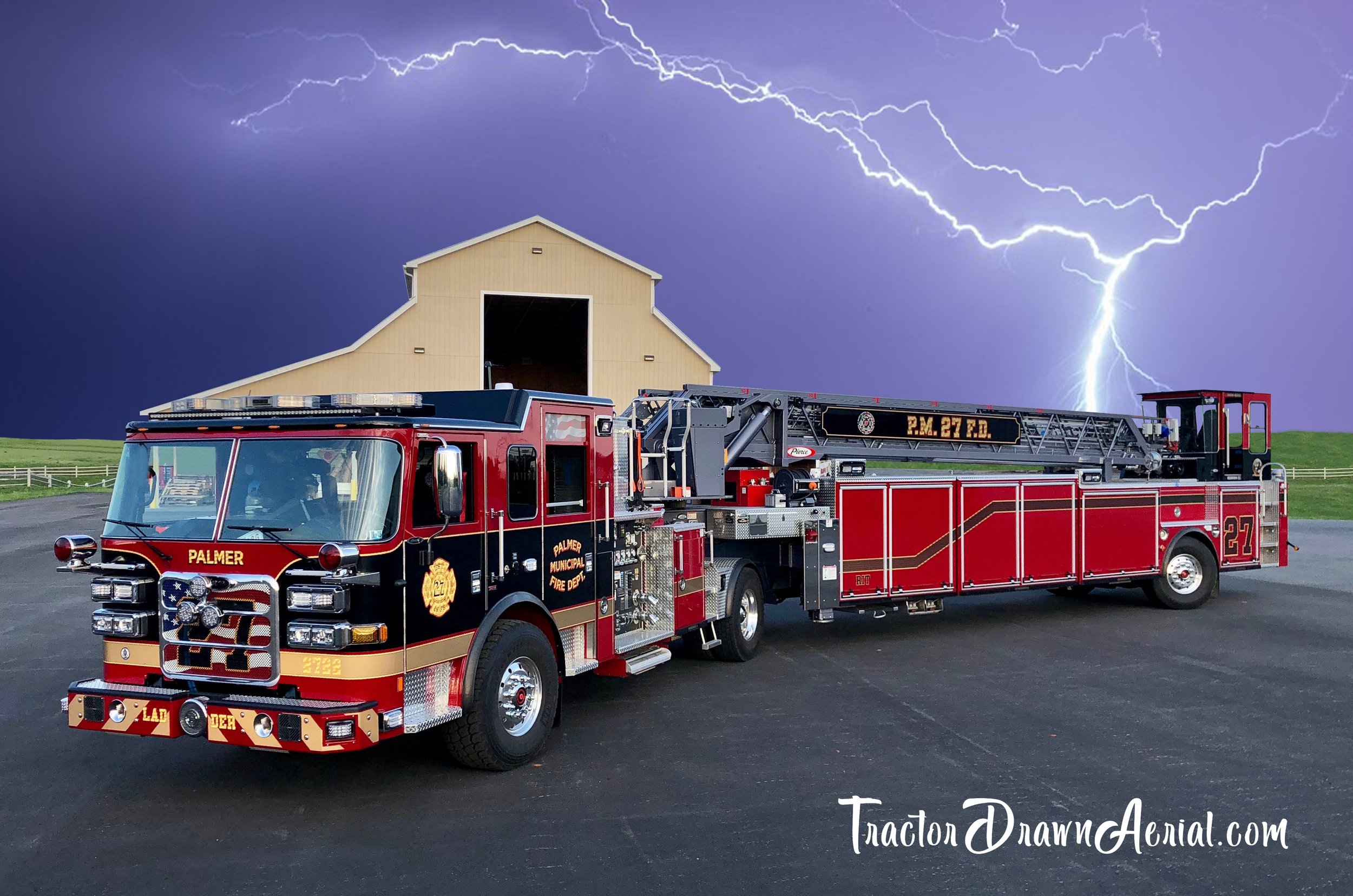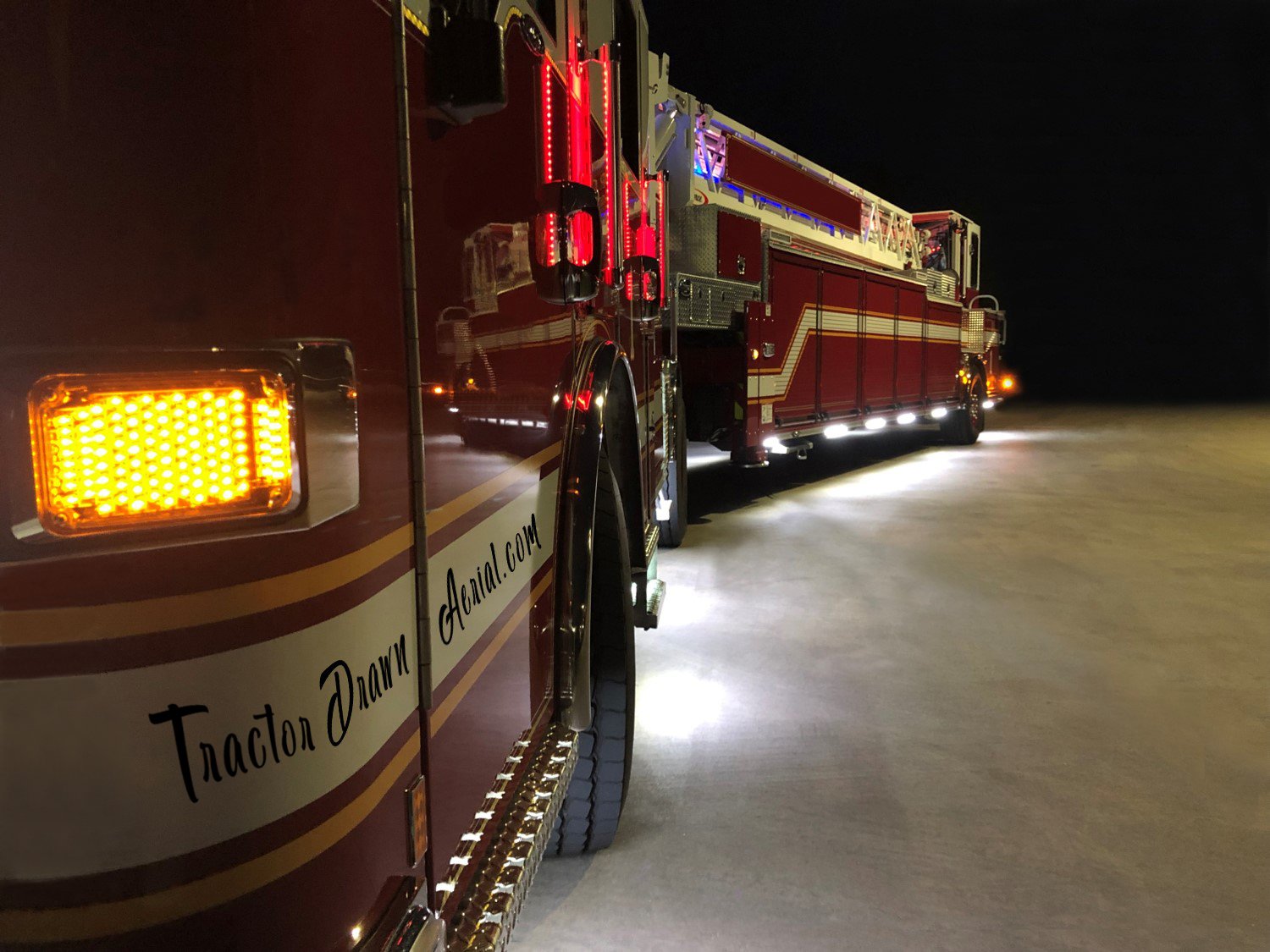why tdA?
Tractor drawn aerials are one of the most unique and versatile fire apparatus in the national fire service. These apparatus have a long history, dating back to the 1800's and are recognized as the most famous piece of fire machinery when people think of the iconic firetruck. No other fire apparatus driving down the road provides as much pageantry, tradition, or solicits as much childlike wonder as a tractor drawn aerial.
pros
Maneuverability
The tractor drawn aerial is the most maneuverable aerial apparatus available, even though it’s much longer than a straight frame aerial. They are able to navigate around obstacles and get in and out of tighter congested areas. This gives it the ability to steer into locations that a straight frame aerial is unable to navigate. This capability provides the opportunity to get closer to a structure for firefighter access or victim rescue. In certain locations, a straight-frame aerial would require a three-point turn to make access or would simply have to park and have the crew walk their equipment to the fire location.
- Highly maneuverable because of the fifth wheel articulation and the ability to steer the rear of the trailer around obstacles.
- More maneuverable than a straight-frame aerial, even though the tractor drawn aerial is longer than a straight-frame apparatus. (see video)
- More maneuverable responding in and around narrow streets, traffic circles/calming circles, parked cars, cul-de-sacs and traffic projects.
- A tractor drawn aerial can access areas a straight-frame aerial simply cannot.
- Because of maneuverability, the turntable on a tractor drawn aerial can be manipulated closer to buildings compared to a straight-frame aerial.
- The tractor drawn aerial is able to navigate into urban developments with tight access to apartment complexes, condos, offices, and college campuses.
- Maneuverability allows for increased on-scene access (where a straight-frame aerial has trouble making access and must use 3-point turn, swing wide into oncoming traffic, go around the block, or back up)
“We knew that a TDA would be much more maneuverable than a straight frame truck. We had no idea exactly how dramatic the maneuverability was going to be increased until we drove our new TDA apparatus through the city. To say that we were blown away with its capabilities would be an understatement. We were able to specify our TDA with an extremely short (149.25”) wheelbase on the tractor. This wheelbase is shorter than some full-sized four door pickup trucks and allows us to maneuver our TDA down streets that our Engines cannot even turn down.”
Division Chief Jimm Walsh,
Winter Park Fire Rescue Department FL
compartment space
- Compartment capacity for a tractor drawn aerial can be between 500 to 650 cubic feet compared to a straight-frame aerial compartment capacity of roughly 160 cubic feet.
- Tractor drawn aerials accommodate a larger number of ground ladders than straight frame aerials. Because tractor drawn aerials are mid-mount aerials, the structural components for the turntable are located towards the front of the apparatus, thus providing a larger space for ground ladders in the back of the trailer.
- Because of the size of a tractor drawn aerials trailer, ground ladders are able to be attached to the outside on the trailer, adding to your ground ladder complement.
- Because of the sheer compartment space difference between a straight-frame aerial and a tractor drawn aerial, firefighters are not hampered with issues such as:
o Firefighters opening 2 or 3 compartments to get tools and equipment.
o Tools and equipment stacked on top of each other.
o Tools and equipment being stored up high, having a negative impact on body mechanics.
faster set-up time
- A tractor drawn aerial has only two outriggers compared to four.
- Advantage in time savings when setting up the aerial.
- Outriggers can be ordered now without pins, allowing for set up with one person.
Aerial operational footprint
- With two outriggers you are able to deploy them in areas with a smaller footprint where you could not deploy four outriggers.
- Approximately 15’ to 16’ wide deployment of outriggers depending upon specs vs. 18’ to 20’ for straight chassis platforms.
Less Weight
- Even though the tractor drawn aerial is a larger apparatus, the overall weight of the apparatus is approximately 15,000 pounds lighter than an aerial platform.
- Less weight equals less wear on braking, transmission, engine, suspension, etc.
Visibility
- Because the tiller operator is much higher than the driver they can provide a second set of excellent eyes for:
- Traffic at intersections
- Seeing up ahead of the traffic that's cresting the hill in front of them
- Positioning the turntable
- Wires or other obstacles
Overall Height
- Typical height of a tractor drawn aerialis around 11’ 2” where aerial platforms can be from 11’11” to 12’2”.
cons
Length
- Increased overall length of the apparatus (56’ up to 65’).
- Departments may not have a station with large enough apparatus bays.
Training
- Must have trained driver/ tiller operators.
- Requires a formal training program. The days of “on-the-job training” should be a thing of the past.
Staffing
- Requires having two drivers.
- This can be a burden on departments who rely on moving personnel around to fill staffing needs.
Cost
- Tractor drawn aerials can be more expensive depending on the type of aerial apparatus you purchase.
















